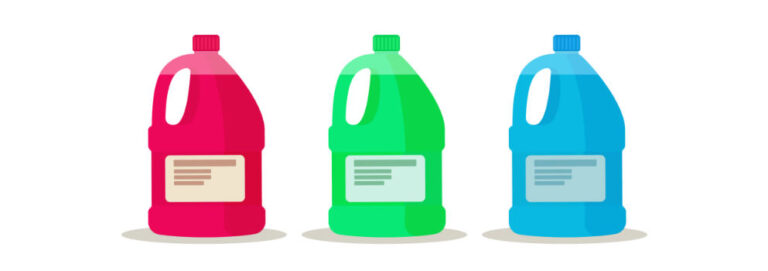In any air-cooled chiller, the refrigerant is the core element responsible for absorbing heat from the chilled water or process fluid and then releasing that heat into the ambient air. Essentially, it is the medium that carries thermal energy away from your system, enabling effective cooling.
Selecting the right refrigerant is crucial not only for the thermal performance and energy efficiency of the chiller but also for environmental impact and compliance with global regulations. Over the decades, due to increasing awareness about ozone depletion and climate change, refrigerant chemistry has shifted dramatically—from early chlorofluorocarbons (CFCs) to hydrofluorocarbons (HFCs) and now towards low Global Warming Potential (GWP) alternatives like hydrofluoroolefins (HFOs) and natural refrigerants.
The Refrigeration Cycle Recap
Before diving into refrigerants, it’s important to understand their role in the vapor compression cycle, which air-cooled chillers use:
- Evaporation: Refrigerant absorbs heat at low pressure/temperature from the water or process fluid inside the evaporator, causing it to evaporate.
- Compression: The compressor raises the refrigerant’s pressure and temperature.
- Condensation: The hot, high-pressure refrigerant releases heat to ambient air in the condenser (with fans blowing air over coils).
- Expansion: The refrigerant passes through an expansion valve, dropping in pressure and temperature, and the cycle repeats.
The choice of refrigerant influences each step’s efficiency and environmental footprint.
Common Refrigerants Used in Air-Cooled Chillers
R-410A
- Classification: HFC (Hydrofluorocarbon) blend of R-32 and R-125.
- Performance: R-410A offers high cooling capacity and good thermodynamic efficiency, making it a popular choice for residential and commercial air-cooled chillers.
- Environmental Impact: It has a relatively high Global Warming Potential (GWP) of about 2088, which has led to regulations restricting its use in many countries.
- Applications: Used widely in new HVAC systems, especially in regions where alternatives are still developing.
- Limitations: Phase-down under regulations is pushing users toward lower-GWP alternatives.
R-134a
- Classification: HFC refrigerant.
- Performance: Excellent stability, non-toxic, non-flammable, and effective across various temperature ranges.
- Environmental Impact: GWP around 1430, higher than many newer refrigerants, making it subject to phase-down.
- Applications: Used in medium and large chillers, especially for process cooling and industrial applications.
- Trends: Many manufacturers are now transitioning away from R-134a to greener options.
R-32
- Classification: Single-component HFC refrigerant.
- Performance: R-32 is gaining popularity due to its higher cooling efficiency and lower refrigerant charge requirements compared to R-410A.
- Environmental Impact: Has a GWP of approximately 675, roughly one-third of R-410A.
- Safety: Classified as mildly flammable (A2L), which requires specific safety standards in design and installation.
- Applications: Increasingly used in high-efficiency residential and commercial air-cooled chillers.
- Benefits: Energy-efficient and better environmental profile, making it a leading candidate for future systems.
R-513A (Opteon XP10)
- Classification: HFO-HFC blend.
- Performance: Designed as a near drop-in replacement for R-134a systems with minimal modification. Offers similar cooling capacity and efficiency.
- Environmental Impact: GWP approximately 630, which is less than half of R-134a, making it a greener alternative.
- Safety: Non-flammable, which eases handling and installation concerns.
- Applications: Used in medium-sized air-cooled chillers looking to reduce environmental impact without drastic redesigns.
R-1234ze / R-1234yf
- Classification: Hydrofluoroolefin (HFO) refrigerants.
- Performance: These refrigerants provide excellent thermodynamic properties and are suitable for chillers operating at low to moderate pressures.
- Environmental Impact: Ultra-low GWP values (close to 1), making them some of the most environmentally friendly refrigerants available.
- Applications: Used in new, green building projects and specialized chillers designed for ultra-low emissions.
- Limitations: Higher cost and limited global availability compared to conventional refrigerants.
Natural Refrigerants (e.g., R-290 (Propane), R-744 (CO₂))
- Classification: Hydrocarbon (HC) and inorganic refrigerants.
- Performance: Natural refrigerants have excellent thermodynamic efficiency and very low or zero GWP values.
- Environmental Impact: CO₂ has GWP = 1, Propane (R-290) also very low GWP.
- Applications: Propane is used in small, compact chillers but requires special safety due to high flammability. CO₂ systems are gaining ground in commercial and industrial chillers due to their non-toxicity and low environmental impact.
- Challenges: Requires high-pressure system design (for CO₂) and strict safety codes (for hydrocarbons).
Regulatory & Industry Trends Influencing Refrigerant Choices
Global Regulations
- The Montreal Protocol targeted ozone-depleting substances like CFCs and HCFCs, leading to the phase-out of older refrigerants like R-22.
- The Kigali Amendment to the Montreal Protocol mandates reducing HFCs due to their high GWP, pushing adoption of low-GWP alternatives globally.
- Regional regulations such as the EU F-Gas Regulation, US AIM Act, and India’s HCFC phase-out programs enforce strict GWP limits.
Industry Response
- Increasing use of low-GWP HFO blends (like R-513A) as transitional refrigerants.
- Growth in mildly flammable A2L refrigerants (R-32, R-454B) in new equipment designs to balance safety and environmental benefits.
- Adoption of natural refrigerants in eco-conscious markets and sectors.
- Innovations in microchannel condenser technology reduce refrigerant charge, mitigating leakage and environmental risks.

